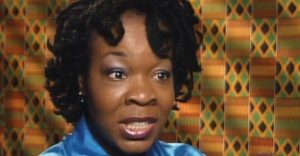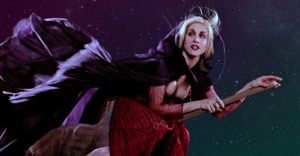What Marvel’s 1990s Black Panther Movie Looked Like (& Why It Didn’t Happen)

Black Panther could have made the jump to the big screen in the 1990s, but the project got trapped in development hell – here’s what happened. The Marvel Cinematic Universe has been in charge of bringing various characters from Marvel Comics to the big screen, starting in 2008 with Iron Man. Tony Stark’s first solo movie kickstarted an extensive connected universe that has added a variety of superheroes, among those Black Panther.
T’Challa and the country of Wakanda made their cinematic debut in 2018 with Ryan Coogler as director and Chadwick Boseman as the Wakandan king and superhero. Black Panther followed T’Challa, the new King and Black Panther, as he came across with Killmonger (Michael B. Jordan), a family related enemy who threatened to begin a global revolution by becoming king and abandoning Wakanda’s isolationist policies. Black Panther was a big financial and critical success, making way for a sequel that is scheduled to arrive in 2022.
Black Panther’s big screen debut is considered one of the best movies in the MCU, but it could have happened years earlier, way before the MCU was a thing, as Marvel approached none other than Wesley Snipes in the 1990s in hopes that T’Challa would be the big hit they needed. Here’s what Black Panther in the 1990s would have looked like and why it didn’t happen.
Wesley Snipes Would’ve Played T’Challa

Wesley Snipes and his then manager were approached by Marvel in the early 1990s to make an adaptation of Black Panther, the first African superhero and who made his first appearance in 1966. Snipes was very interested in the project, and was in talks not only to develop the movie but to play the title character as well, as he was exactly what Marvel needed back then, as it hadn’t had the best luck with its movies, such as The Punisher in 1989 (starring Dolph Lundgren) and the infamous 1986 movie Howard the Duck.
On the other hand, Snipes was going through his best moment at the time, thanks to his performances in New Jack City, White Men Can’t Jump, Passenger 57, Rising Sun, and Demolition Man. Marvel was in need of a name like Snipes for the project to be a hit or at least be on a par with its competitor: DC, which was still enjoying the success of Batman and Batman Returns.
Marvel’s 90s Black Panther Would’ve Shown Another Side of Africa

Speaking to THR in 2018, Wesley Snipes opened up about this failed Black Panther movie and the ideas he had for it. Snipes explained that he was drawn to the character because he was the “antithesis of the stereotypes presented and portrayed about Africans”, their history and their culture. He also pointed out the cultural and social significance of it and knew that he wanted to show a different side of Africa, completely opposite to what the media usually shows. That way, instead of a depressing, desolate, and impoverished Africa, Snipes wanted to show the beauty and history of the country.
John Singleton Was In Talks To Direct – And Would’ve Added The Civil Rights Movement

When it came to finding a director for the project, Marvel had a short list of names, among those Mario Van Peebles and John Singleton. Snipes shared that he never got to talk with Van Peebles about Black Panther, but he did with Singleton – and it didn’t go as expected. Snipes explained that his vision was close to what Coogler did, as in a world of “Africa being a hidden, highly technically advanced society”, but Singleton had a completely different idea.
According to Snipes, Singleton wanted to include the civil rights movement, with Black Panther having the spirit of the Marvel character but “trying to get his son to join the [civil rights activist] organization”. Father and son’s ideals would clash, as one is trying to be politically correct while the other “wants to be a knucklehead”. He also explained that one of the issues he encountered was explaining to those not familiar with the comics that it was a superhero movie, not one about the 1960s movement, something that would have been even more complicated had they moved forward with Singleton’s ideas.
Why Marvel’s 1990s Black Panther Movie Didn’t Happen

Aside from creative differences with the story, there were other factors that didn’t make 1990s Black Panther possible, the most important one being the technology at the time. Wakanda is a technologically advanced country, and Black Panther’s suit is pretty unique, so a Black Panther movie required visual effects that weren’t possible back then. Snipes recalled the costume idea for it, saying it was basically a leotard with cat ears on it, and he would have had to be in shape to pull it off. As for Wakandan technology, it simply wasn’t possible, with Snipes saying they were “so far ahead of the game in the thinking, the technology wasn’t there to do what they had already created in the comic book”.
Ultimately, it was for the best that Black Panther wasn’t made in the 1990s, both for the character and Snipes. Coogler and the MCU did justice to the character, giving it the visuals it deserved and respecting its cultural significance. Snipes ended up being part of the Marvel Universe anyway by playing Blade in the 1998 movie of the same name, which became Marvel’s first hit movie, and went on to reprise the role in Blade II and Blade: Trinity. Snipes didn’t get to play T’Challa, but he did play a big role in putting Marvel’s movies back on track.
About The Author


















